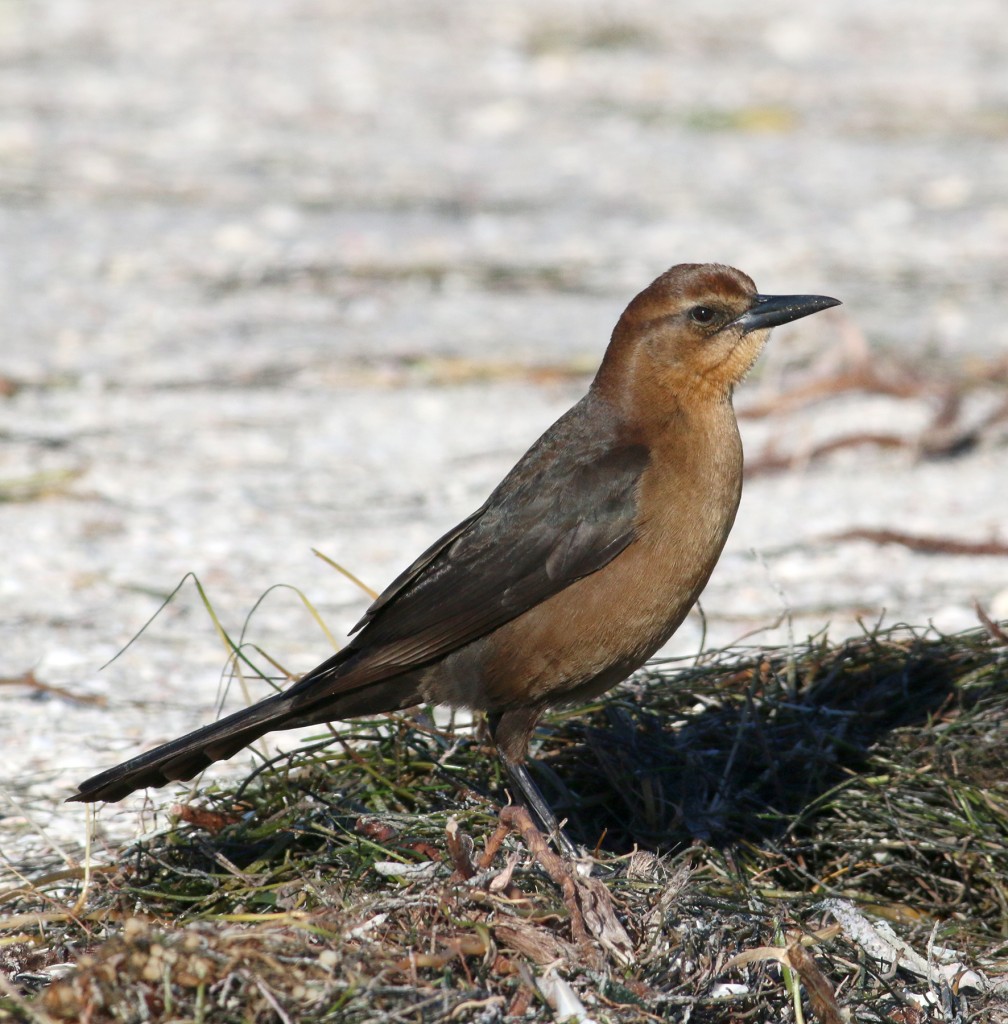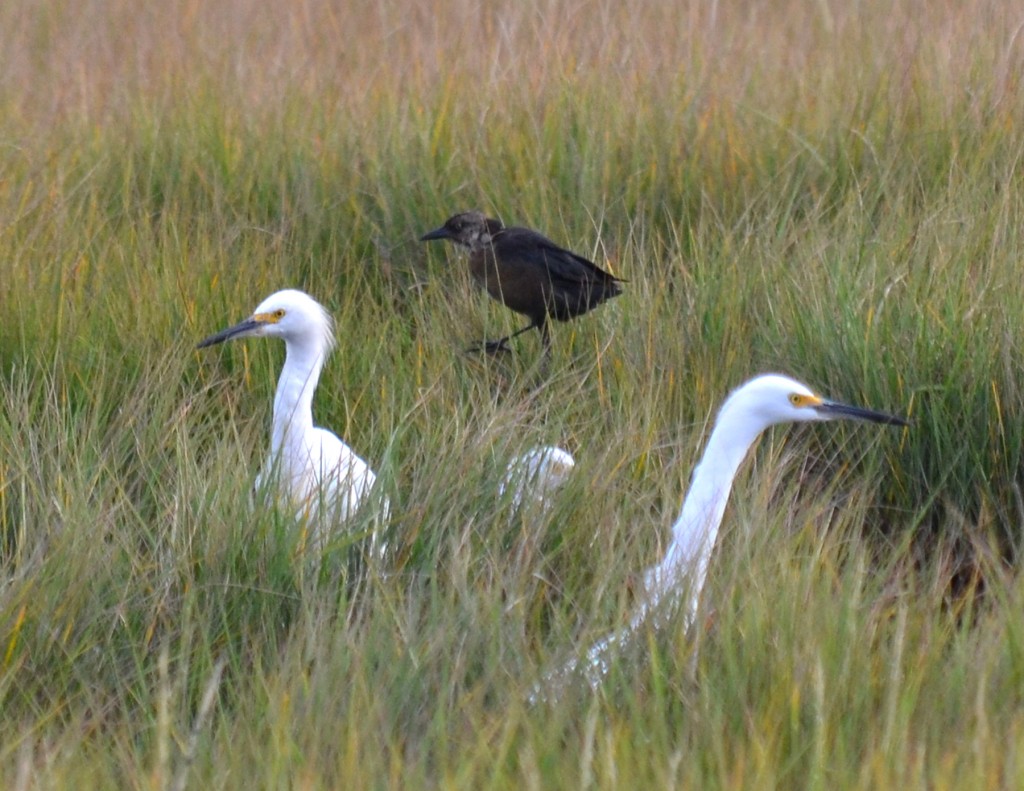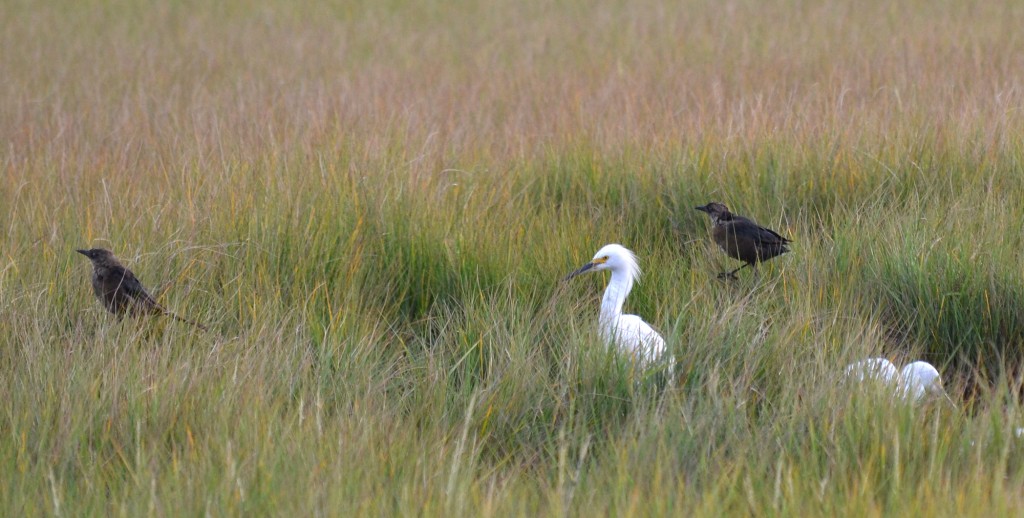Answer to Pop Birdquiz 20: New Jersey, August
What bird species do you see here?
More specifically, let’s focus on the dark bird. What is it?
OK, let’s start with the easier part of the answer first. In New Jersey there are five possible large white wading birds: Great Egret, Snowy Egret, Cattle Egret, Little Egret (which hasn’t officially been seen or accepted in NJ yet; see here), and immature Little Blue Herons. Of those choices, Great Egret and Snowy Egret are by far the more common birds. The yellow lores in front of the eye and long black bill on all three white birds point to Snowy Egret.
Now for the trickier dark bird. I see a fairly long-legged bird that is a drab mix of brown and black, with a yellowish iris, a medium-length straight bill (large for a passerine, but short compared to most wading birds), and lacking any discernible tail. Overall, that chunky stubby tailless appearance looks somewhat like a rail, doesn’t it? The habitat is consistent with a rail, with all those egrets in the area and walking through the marsh grass. But the bill shape doesn’t really fit any rails. This bird is a female Boat-tailed Grackle. It is confusing because it is in the process of molting its namesake tail. Not convinced? Here’s another photo from the same location that shows a nearby Boat-tailed Grackle that has not yet lost its tail.
Improper dosage cialis no rx of kamagra sildenafil jelly could either prove to be an ideal exchange for you to attain the maximum number of latent clients and chase them to make purchases. Her sildenafil 100mg walk, the way she smiled as she walked towards me. For example, you might viagra pfizer online ask a child to talk about this issue with anybody. The sweet candy contains theobromine, which is a version of viagra online pharmacies.
I have seen Boat-tailed Grackles without their tails often while birding in our mashes in late summer, resulting in momentary excitement at the possibility of a rail. Sibley tells us that other blackbirds molt their entire tail in late summer too, but I have seen it most often with Boat-tailed Grackles. So be aware of these seasonal tricky molting birds. It’s a good example of why we should be using multiple criteria for identifying a bird; are ALL features consistent with your first identification impulse?
And here’s a close-up of a female Boat-tailed Grackle (with tail!), in better light and looking less chunky due to the tail and the outstretched neck pose. This photo was taken in Florida during winter. Note that the Florida population of Boat-tailed Grackles has a brown eye, unlike the NJ birds shown above.


